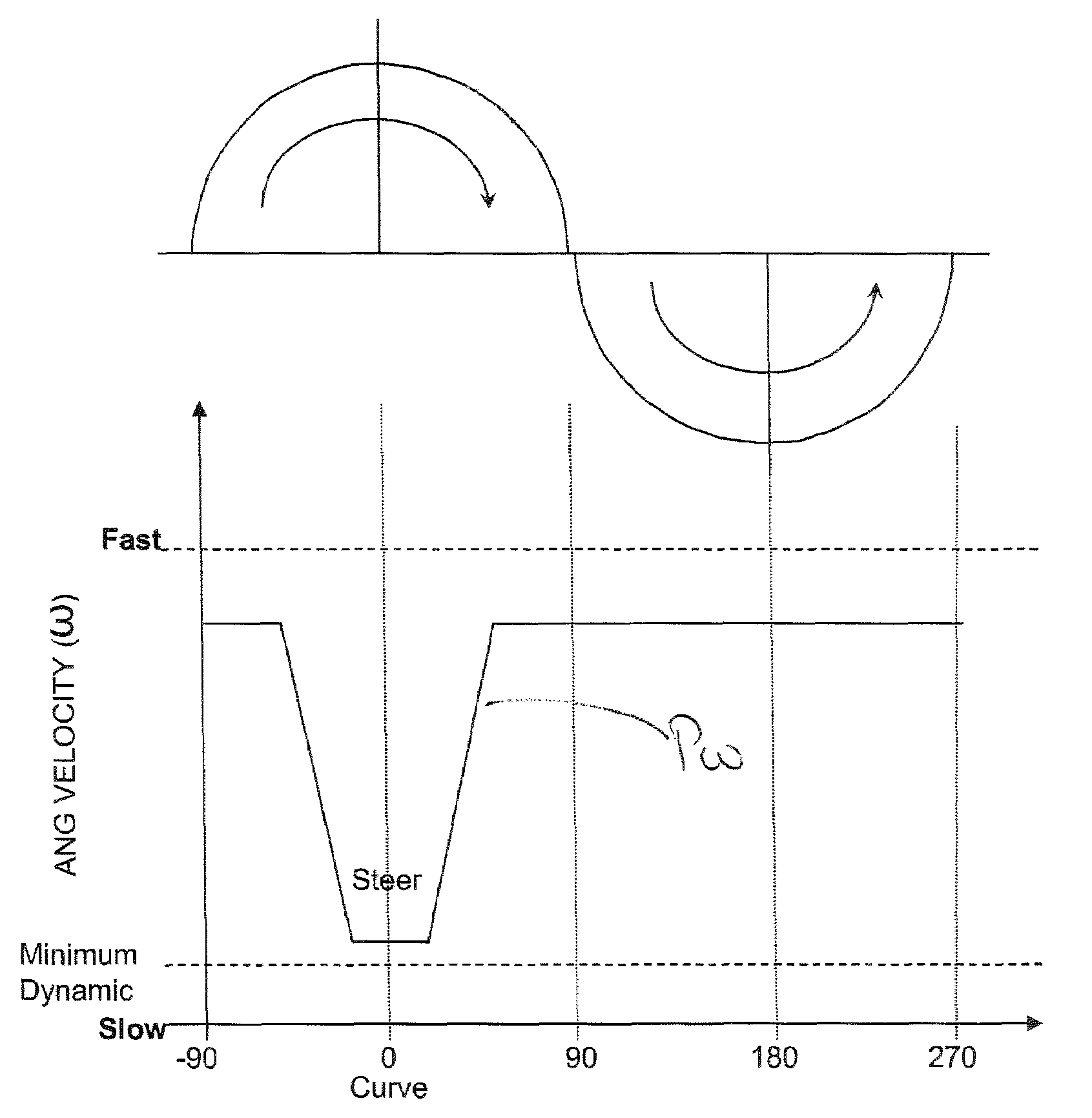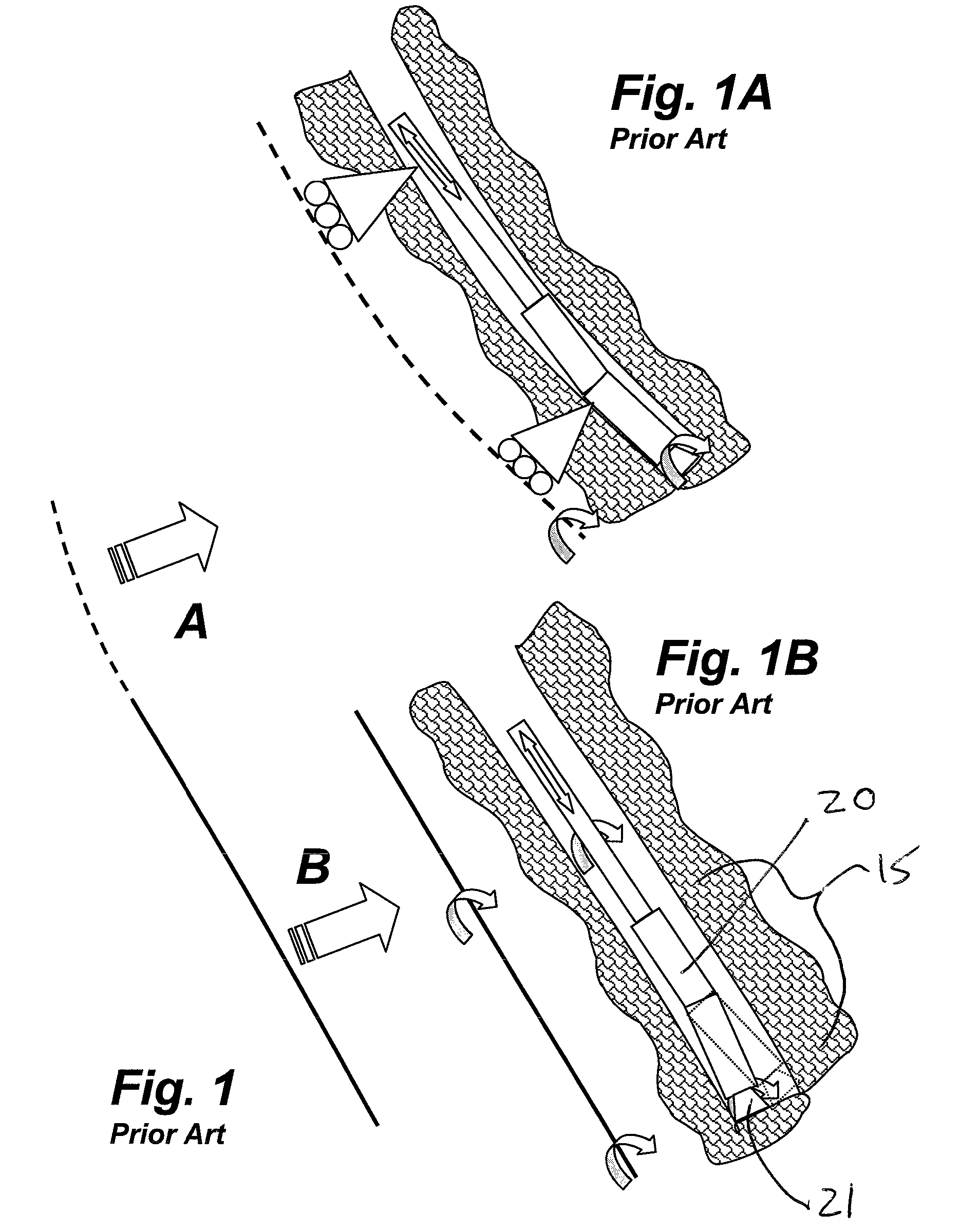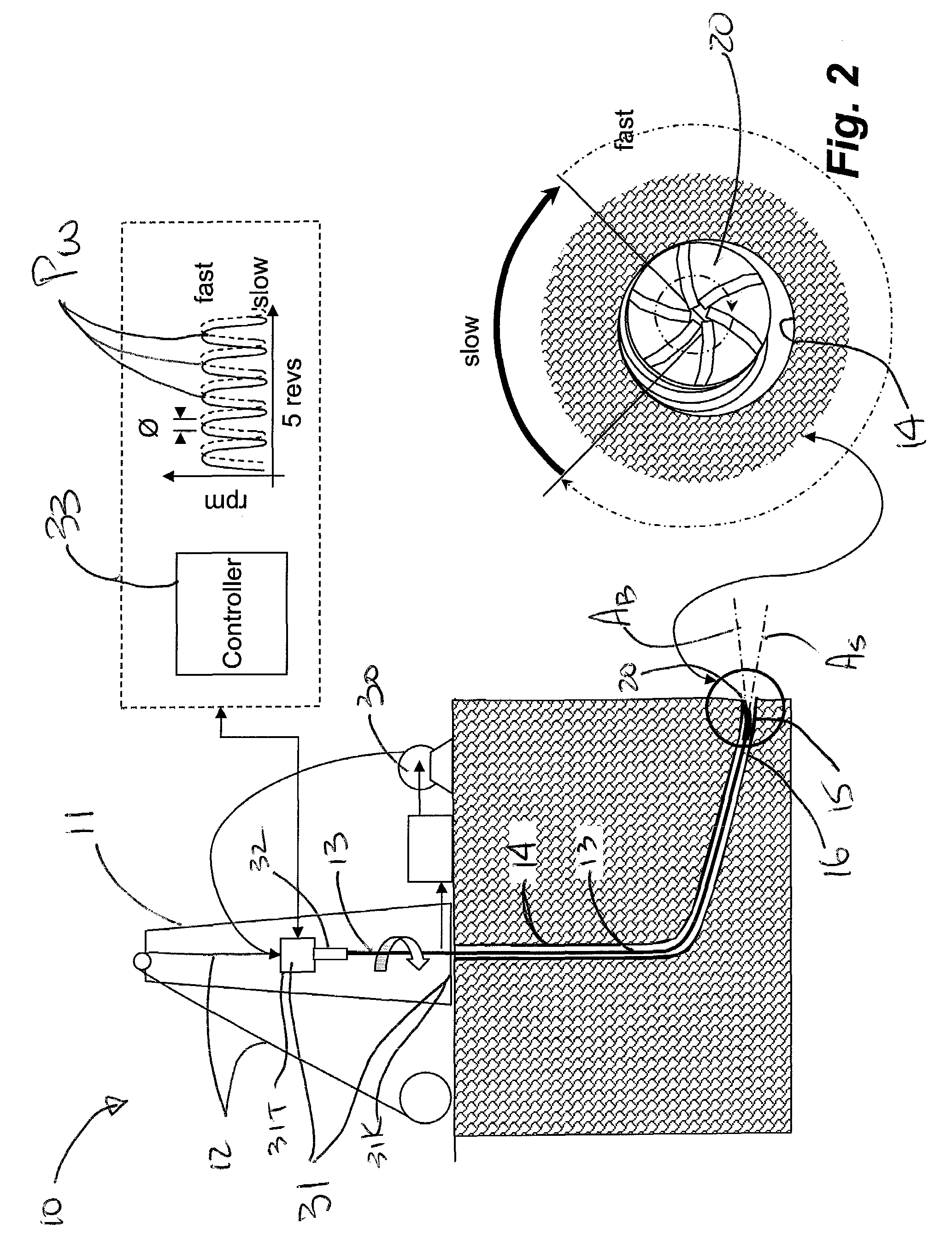Method and apparatus for directional drilling with variable drill string rotation
a directional drilling and variable technology, applied in the direction of drilling accessories, drilling machines and methods, directional drilling, etc., can solve the problems of overloading of cutting structures, inefficient phase, and inability to control the orientation of the bit and the amount of force applied to the cutting structur
- Summary
- Abstract
- Description
- Claims
- Application Information
AI Technical Summary
Benefits of technology
Problems solved by technology
Method used
Image
Examples
Embodiment Construction
[0033]With reference to FIGS. 1,1A and 1B, a schematic of two drilling modes of the prior art illustrate, as first shown in FIGS. 1,1A, a borehole being drilled in which the drill string is non-rotating and is “sliding” while a drilling assembly, including a bent housing having a motor and a drill bit, drills the borehole along a curved path as determined by the bent housing. As shown in FIGS. 1,1B, the drill string can also be rotated continuously, continuously reorienting the bent housing for drilling a straight path having a slightly larger borehole. The desired trajectory or path of the resulting borehole is achieved using a combination of the “sliding” and rotating drilling. An operator periodically or continuously monitors the tool-face orientation such as through periodic surveys while sliding using measurement while drilling (MWD) tools. While sliding, a portion of the drilling assembly slides without rotating and MWD can be used. Conventionally, for adjustment of the boreho...
PUM
 Login to View More
Login to View More Abstract
Description
Claims
Application Information
 Login to View More
Login to View More - R&D
- Intellectual Property
- Life Sciences
- Materials
- Tech Scout
- Unparalleled Data Quality
- Higher Quality Content
- 60% Fewer Hallucinations
Browse by: Latest US Patents, China's latest patents, Technical Efficacy Thesaurus, Application Domain, Technology Topic, Popular Technical Reports.
© 2025 PatSnap. All rights reserved.Legal|Privacy policy|Modern Slavery Act Transparency Statement|Sitemap|About US| Contact US: help@patsnap.com



